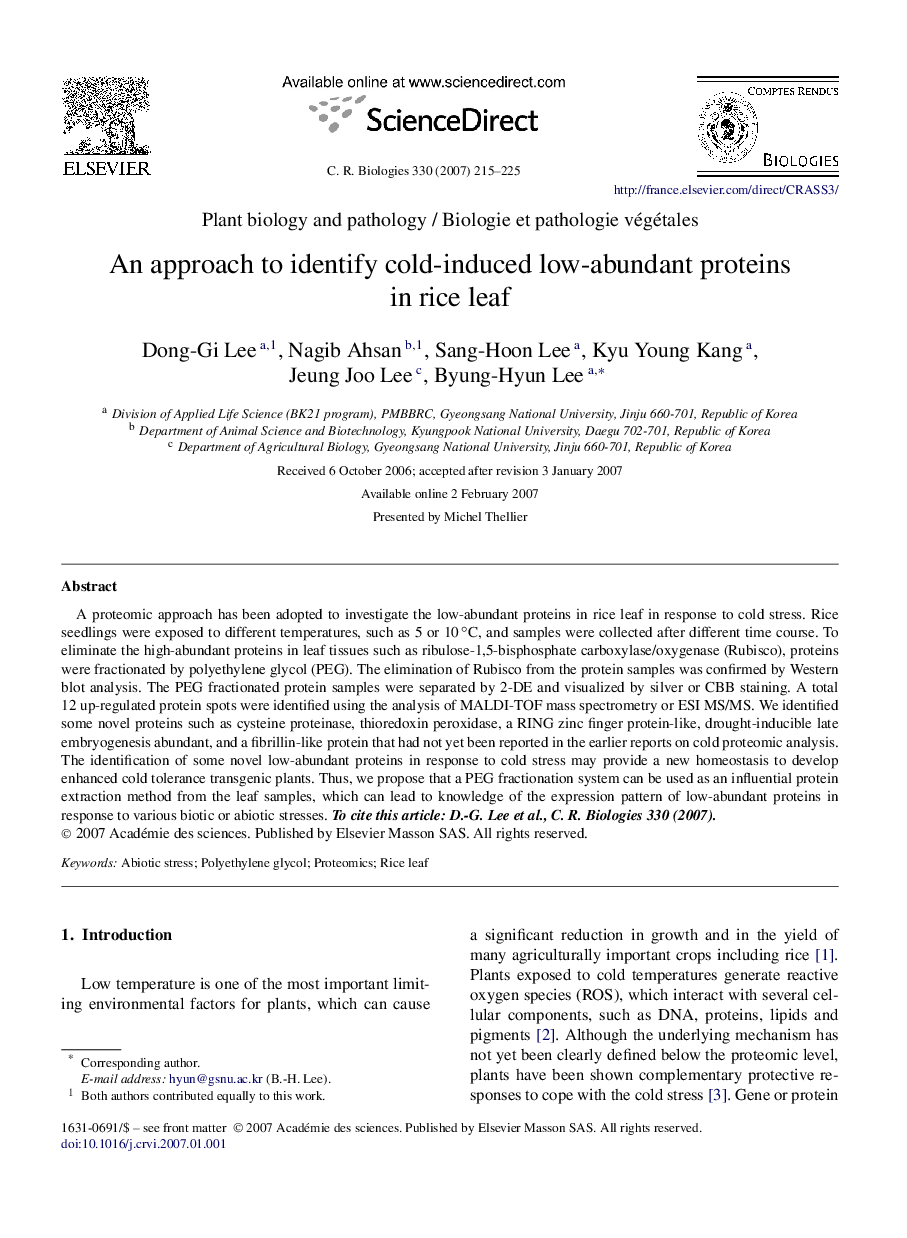| کد مقاله | کد نشریه | سال انتشار | مقاله انگلیسی | نسخه تمام متن |
|---|---|---|---|---|
| 2784452 | 1153818 | 2007 | 11 صفحه PDF | دانلود رایگان |

A proteomic approach has been adopted to investigate the low-abundant proteins in rice leaf in response to cold stress. Rice seedlings were exposed to different temperatures, such as 5 or 10 °C, and samples were collected after different time course. To eliminate the high-abundant proteins in leaf tissues such as ribulose-1,5-bisphosphate carboxylase/oxygenase (Rubisco), proteins were fractionated by polyethylene glycol (PEG). The elimination of Rubisco from the protein samples was confirmed by Western blot analysis. The PEG fractionated protein samples were separated by 2-DE and visualized by silver or CBB staining. A total 12 up-regulated protein spots were identified using the analysis of MALDI-TOF mass spectrometry or ESI MS/MS. We identified some novel proteins such as cysteine proteinase, thioredoxin peroxidase, a RING zinc finger protein-like, drought-inducible late embryogenesis abundant, and a fibrillin-like protein that had not yet been reported in the earlier reports on cold proteomic analysis. The identification of some novel low-abundant proteins in response to cold stress may provide a new homeostasis to develop enhanced cold tolerance transgenic plants. Thus, we propose that a PEG fractionation system can be used as an influential protein extraction method from the leaf samples, which can lead to knowledge of the expression pattern of low-abundant proteins in response to various biotic or abiotic stresses. To cite this article: D.-G. Lee et al., C. R. Biologies 330 (2007).
Journal: Comptes Rendus Biologies - Volume 330, Issue 3, March 2007, Pages 215–225